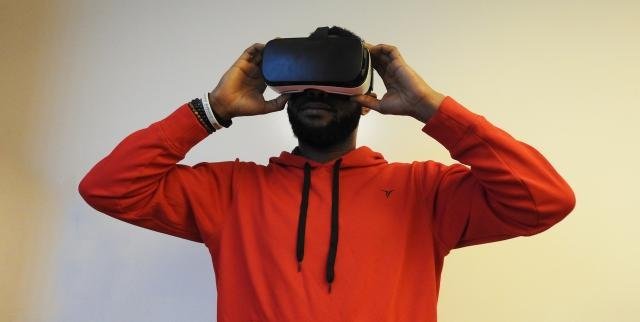Technology is evolving rapidly, creating new ways for us to interact with digital environments. Two of the most exciting innovations in this space are Virtual Reality (VR) and Augmented Reality (AR). While both technologies offer immersive experiences, they serve different purposes and are used in distinct ways. In this article, we will explore the key differences between VR and AR, their applications, and their future potential.
Understanding Virtual Reality (VR)
Virtual Reality (VR) is a fully immersive experience that replaces the real world with a computer-generated environment. Users typically wear a VR headset, which tracks their movements and adjusts their view accordingly, making them feel as if they are inside a completely different world.
Key Features of VR:
- Immersion: Users are completely cut off from the real world and placed into a simulated environment.
- Full Interaction: VR allows users to move within the virtual space and interact with digital objects.
- Hardware Requirement: VR requires a VR headset (such as Oculus Rift, HTC Vive, or PlayStation VR) and sometimes additional accessories like hand controllers.
Applications of VR:
- Gaming: VR gaming offers immersive experiences where players can feel as if they are inside the game.
- Training & Education: Used for medical simulations, flight training, and military exercises.
- Therapy & Rehabilitation: VR is being used to treat phobias, PTSD, and even pain management.
- Virtual Tourism: Allows users to explore destinations without leaving their homes.
Understanding Augmented Reality (AR)
Augmented Reality (AR) enhances the real world by overlaying digital elements onto it. Unlike VR, AR does not replace reality but rather enhances it by adding computer-generated graphics, sounds, or other sensory enhancements.
Key Features of AR:
- Real-World Integration: AR overlays digital information onto the physical world in real-time.
- No Full Immersion: Users remain aware of their surroundings while interacting with digital content.
- Devices Used: AR can be experienced through smartphones, tablets, or AR glasses (like Microsoft HoloLens or Google Glass).
Applications of AR:
- Mobile Apps & Gaming: Games like Pokémon GO and AR filters on social media enhance entertainment experiences.
- Retail & Shopping: Virtual try-ons for clothes, accessories, and makeup.
- Healthcare & Surgery: Surgeons use AR for real-time guidance during operations.
- Navigation: AR-powered navigation apps provide real-time directions overlaid onto the real world.
Key Differences Between VR and AR
| Feature | Virtual Reality (VR) | Augmented Reality (AR) |
|---|---|---|
| Immersion | Fully immersive digital environment | Enhances real-world experience with digital overlays |
| Devices | Requires VR headsets and controllers | Uses smartphones, tablets, AR glasses |
| Interaction | Users are fully inside the virtual world | Users interact with digital content while staying in the real world |
| Usage | Gaming, training, therapy, tourism | Gaming, retail, healthcare, navigation |
| Real-World Connection | Replaces reality with a simulated world | Adds digital elements to reality without replacing it |
The Future of VR and AR
Both VR and AR are rapidly evolving and have the potential to transform multiple industries. The future trends for each include:
The Future of VR:
- Improved Hardware: Lightweight headsets with better resolution and motion tracking.
- Wider Adoption: More affordable VR devices will make the technology accessible to a larger audience.
- Enhanced Social Interactions: The metaverse and VR-based social platforms are growing.
- More Applications: VR will continue to expand into medical training, architecture, and entertainment.
The Future of AR:
- Advancements in AR Glasses: Companies like Apple, Meta, and Google are developing smart AR glasses for everyday use.
- Retail Revolution: AR will continue to enhance online and in-store shopping experiences.
- 5G & AR Integration: Faster internet speeds will allow for more seamless and immersive AR experiences.
- Workplace Transformation: AR-powered remote assistance and collaboration will become more common.
Virtual Reality (VR) and Augmented Reality (AR) are two revolutionary technologies shaping the way we interact with the digital and physical world. While VR offers full immersion into a digital space, AR enhances reality by overlaying digital elements. Both technologies have unique applications and are expected to evolve significantly in the coming years. Whether you’re a gamer, a business professional, or a healthcare provider, understanding the differences between VR and AR can help you explore their vast potential.
As innovation continues, we can expect VR and AR to become an integral part of everyday life, bringing us closer to a future where digital and physical experiences seamlessly blend.



